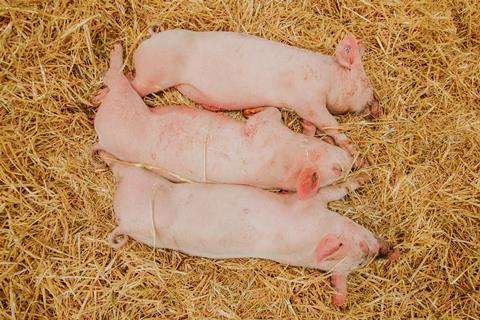The fatty acid kinase (Fak) machinery is composed of a FakA kinase and a panel of diverse fatty acid-binding partners (FakB1 to FakB5). The zoonotic pathogen Streptococcus suis (S. suis) pathogen, an important pathogen of pigs, exploits this Fak system to scavenge exogenous fatty acid (eFA), circumventing the requirement of de novo synthesis of fatty acids (FAS II). This renders FAS II antibiotics clinically ineffective.

Very recently, the complex structure of FakA-FakB2 of S. suis was solved, largely explaining how FakA binds to FakB2 carrying an oleate cargo. However, the question of how an oleate shuttle from FakB2 to FakA kinase remains unanswered.
READ MORE: Study unveils complexity of zoonotic transmission chains
READ MORE: Scientists discover new defense mechanism in bacteria
An investigation into this question was led by Youjun Feng (Zhejiang University School of Medicine), Ting-Jun Hou (College of Pharmaceutical Sciences, Zhejiang University), and Chun Zhou (Zhejiang University School of Medicine).
Oleate transfer
By using crystal structure-based molecular dynamics simulations, Dr. Chen and colleagues aimed to trap the landscape of oleate transfer from FakB2 to FakA phosphorylation site. The study suggested that the oleyl substrate transfer is initiated upon the presence of ATP cofactor, of which the γ-phosphate group close to Mg2+ ion markedly induces conformational alteration of FakA_N domain.
The acyl transfer was further assumed as a cycle of “release to recapture” by FakA enzyme. The FakA_C domain was found to contain a lysine residue-rich cavity that is functionally defined to be engaged in oleyl substrate recapturing. An additional pocket positioned at an interface between FakA_C and FakA_N, was premised to accommodate an alkyl moiety of the coming oleyl substrate, which constitutes a conformational prerequisite to phosphorylate oleyl substrate.
More importantly, Dr. Chen collected a number of biochemical evidence that argued against the interpretation that FakB2 binds to FakA_N domain.
In summary, this study constitutes a structural and functional proof for the transfer of oleyl substrate from FakB2 subunit to FakA kinase, central to a FAS II bypass.







No comments yet